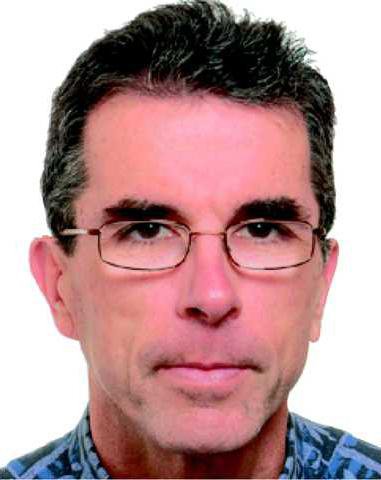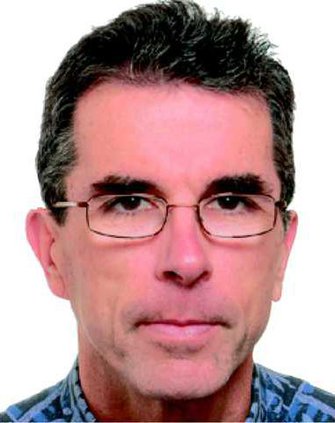It was at one time - in perhaps the 1930s - cutting edge as burger places went.
The building was a thin metal box with no insulation and no fancy wall covers. The floor was concrete but instead of being smooth it had a pebble texture.
You could see your food being prepared by peering in large windows. There was no place that wasn't visible to the customers except for the walk-in refrigeration unit.
Covering the dining patio, outside storage rooms and the main building was a multi-colored metal patio awning that was prevalent in the 1950s. The tables were old-fashioned wooden picnic benches complete with the initials carved into them by generations of high school kids who could carry pocket knives without being arrested as terrorists. You cleaned the dining room by first sweeping it, then hosing it down to clean it of the summer dust.
The place had been known for years as the Frosty Hut. Mom bought it after Dad died. It was Dad's dream to one day own a place like the Frosty Hut. Not only did it fulfill Dad's dream but it also provided Mom with a way to support four kids age 2 to 14.
It was kind of a nutso move given the fact in order to make a small business work you have to often work seven days a week between 12 and 14 hours a day. It also helps if you have as many of your kids work as possible.
The name Mom came up with for the place reflected how she thought she may have gone off the deep end of no longer working for someone and going into business for herself. The name she chose was the Squirrel Cage.
So in early 1966, five months after Dad died, the 14-year run started.
Mom, given her upbringing, had to do things her way. Suppliers tried to get her to buy frozen prepared hamburger patties as her profit margin would be wider. Mom figured if she wouldn't serve it at home or eat it herself, she wouldn't sell it. So every day we dropped by Leles' Public Market where we'd wait for Angelo Leles to grind 100 or so pounds of ground chuck.
The soda supplier was always monkeying with the nozzles on the dispensers saying mom was putting in too much syrup and was costing her money. She loved Pepsi from the bottle and didn't like fountain Pepsi that she had bought elsewhere. So her decision was to add enough syrup in the mix to make it taste like the real thing.
She did the same thing with the soft serve ice cream. The heavier it comes out of the machine, the better it tastes. But at the same time heavier soft serve, while tasting a lot better than the airy stuff, also cut into your profit margins.
That said, she built up a loyal following. She'd get travelers years after Highway 99E became Highway 65 with the opening of Interstate 5 on the west side of the Sacramento Valley who would go out of their way to make a stop at the Squirrel Cage in Lincoln for a burger, frosty or a milkshake.
When she opened, the smallest burger was called a "Junior" that sold for 19 cents. It was a full-size burger served between two buns with sauce and pickles. By the way, McDonald's special sauce isn't all that special given if you mix catsup (not the cheap runny version as the creators of Ronald did), mustard, and mayonnaise in the right combination it tastes pretty darn good.
The smallest drink at 10 ounces was a nickel and the smallest frosty cone cost a nickel as well. By the time she sold in 1980 she could no longer get 10-ounce cups and the 12-ounce cups sold for a quarter while the smallest frosty was 35 cents.
I learned a lot working at the Squirrel Cage during the summer and after school between hitting the books and working for $1 a photo and 15 cents an inch covering local sports and city council meetings for the weekly Lincoln News Messenger.
Among them:
• Having your Mom as a boss is way cool even though you were expected to go 110 percent at all times and breaks, if they happened, would only come after there were no customers to wait on, lettuce to chop, or milk shake collars to clean.
• The most expensive part of the soft drink, at least back then, was the cup. Mom, who obviously would be banned if she were alive today from ever joining the Sierra Club, preferred to use foam cups. They were more expensive but they kept the drinks cooler which is what she liked. Next was the shaved ice from the ice machine, then the carbonation, followed by the straw and lid with the cost of the syrup coming in last.
• Everyone, except someone who owns their own business, thinks that every dollar you take in is 100 percent profit.
• Working in an all metal building without insulation even with air conditioning is hotter than heck in the summer.
• It's a blast waiting on the public.
And, most important of all, if you have no choice but to work to help put food on the table and buy your own clothes when you're 13 you tend to get a real firm grasp on concepts such as the importance of a good education, the value of money, and how to interact with people regardless of how incredibly shy you might be.
Also it helps to be a little nuts if you go into business for yourself.
This column is the opinion of Dennis Wyatt and does not necessarily represent the opinion of Morris Newspaper Corp. of CA.





